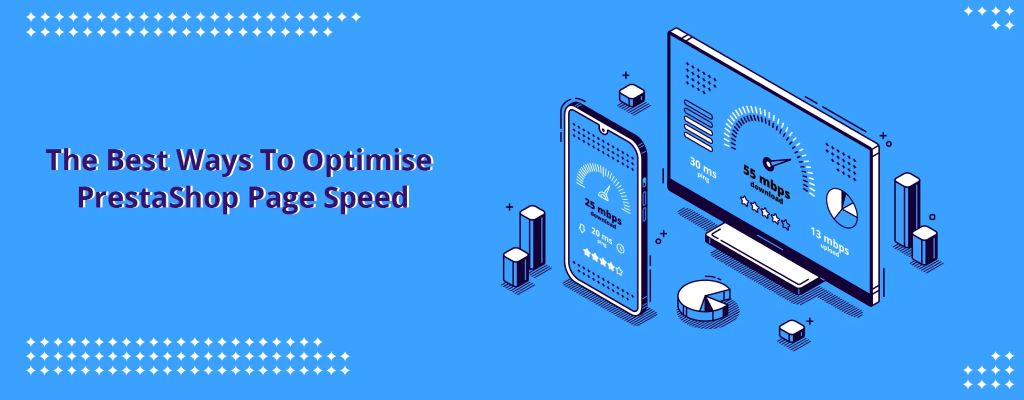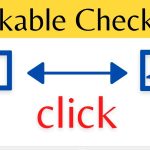As an online business owner, you understand the importance of having a fast and optimized Prestashop website. It not only ensures a better user experience but also drives more conversions and boosts your sales. However, several factors can slow down your Prestashop store and negatively impact its performance. These include large image file sizes, unoptimized code, outdated plugins, and slow hosting servers.
To address these issues, it’s essential to take a comprehensive approach to speed up your Prestashop website. We will discuss various ways to achieve optimal loading times, such as optimizing images, cleaning up your code, updating plugins, and choosing a reliable hosting provider. With these tips, you can significantly improve your website’s performance and provide a seamless shopping experience for your customers.
Why Website Speed Matters
In today’s digital world, website speed is one of the most important factors that determine conversions, bounce rates and overall success of an e-commerce store. Consider these statistics:
- According to Google, 53% of mobile site visitors leave a page that takes longer than 3 seconds to load.
- A 1-second delay in page load time can result in a 7% reduction in conversions.
- If your website takes 3+ seconds to load, you could lose up to 50% of your visitors.
- Faster loading websites have higher ad viewability, user engagement and lower bounce rates.
It’s clear that speed is critical, especially for e-commerce websites like Prestashop. The faster your site loads, the more sales and revenue you can generate. Let’s look at some ways to analyze and improve your Prestashop store’s speed.

Analyzing Your Prestashop Website’s Current Speed
Before optimizing your Prestashop website, you need to analyze its current speed and performance. Here are some ways to test your site’s loading times:
Use Google PageSpeed Insights
Google PageSpeed Insights is a free online tool that analyzes your website and provides performance scores along with recommendations to improve speed. It examines factors like server response times, page size, caching and more.
Simply enter your website URL and run the analysis. Pay attention to the overall scores for mobile and desktop as well as the suggestions to enhance performance.
Check Webpage Load Times
Use online tools like Pingdom or GTmetrix that can monitor actual webpage load times from different locations. They provide page load speed insights like HTML/page size, number of requests, time to first byte and more.
Look for page load times under 3 seconds on mobile and under 2 seconds on the desktop for optimal performance.
Test Site Speed Yourself
Personally visit your website on different devices and connections to experience actual load times. Check speed over WiFi and cellular networks.
You can also use browser developer tools to analyze factors like DOM load times, resource loading and more.
Review Web Server Response Times
Use uptime monitoring tools to record your web server’s response times over a period. Consistent high response times indicate hosting or server-side issues that need addressing.
Aim for server response times under 200ms for best performance. Spikes beyond 1 second will significantly slow down page loads.
By analyzing speed from multiple angles, you can identify key issues to focus your optimization efforts on.
Key Areas to Optimize for Faster Prestashop Websites
There are several areas of your Prestashop website you can optimize to boost speed and performance:
1. Improve Web Hosting
Your web hosting plan and server configuration play a big role in site speed. Using an unoptimized, low-quality shared host can drag down Prestashop performance.
Consider upgrading to a managed VPS or cloud hosting plan with optimal specs for your traffic levels. Quicker processors, more RAM and SSD storage will speed up server response times.
Fine tune your web server settings and stack for maximum performance. Use a caching proxy like Varnish for faster delivery of cacheable content.
2. Enable Caching
Caching stores elements of your Prestashop pages in temporary memory locations for faster loading on repeat visits. This avoids time-consuming database queries and heavy processing each time.
Make sure caching is enabled for both the front and back end. Also, cache elements like images, CSS, JS and HTML through Prestashop or caching plugins.
Configure optimal cache times so static assets are not stale, but your server is not overloaded with cache clearing.
3. Optimize Database
Your MySQL database can become a performance bottleneck as your Prestashop catalog and traffic grows. Optimizing your database improves query times and reduces load on your server.
- Tweak the MySQL configuration according to best practices for InnoDB/MyISAM. Increase query cache size.
- Use Redis for database caching to take load off MySQL.
- Archive old orders to avoid an overloaded orders table.
- Add indexes to speed up frequent queries, JOINs and searches.
- Partition large product category tables.
4. Minify Resources
Minification removes whitespace, comments and unnecessary characters from HTML, CSS, JavaScript and other resources without affecting functionality. This significantly reduces file size and speeds up loading.
Enable minification through your Prestashop settings or use plugins like Css/Js Minify to minify resources automatically.
5. Compress Images
Images often make up the bulk of page size. Compressing images reduces their file size drastically without affecting visual quality much.
Use tools like TinyPNG or Squoosh to compress images before uploading to your shop. Enable dynamic image compression via .htaccess. Also, downsize overly large images.
6. Limit HTTP Requests
Every file/resource like images, scripts, and stylesheets requested on your pages creates an additional HTTP call to your server. Reducing HTTP requests allows for faster page loads.
Combine your CSS/JavaScript files. Load non-critical resources asynchronously. Eliminate unnecessary plugins. Use image sprites.
Aim for under 70 requests per webpage.
7. Enable GZIP Compression
GZIP compressing reduces the response size by compacting text-based assets like HTML, JS, CSS before delivery. This minimizes bandwidth usage and speeds up transmission.
Make sure compression is enabled in your Prestashop settings and .htaccess. Configure your web server to leverage browser/proxy caching.
8. Use A Content Delivery Network
A CDN stores cached static assets on servers spread across the globe and deliver them to visitors from the nearest location. This provides faster load times globally.
You can easily integrate a CDN like Cloudflare to serve your Prestashop site’s images, CSS, JS from edge locations. Configure caching rules for optimal performance.
9. Lazy Load Assets
Lazy loading defers non-critical resources like images/videos further down the page until after the initial load. This allows above-the-fold content to load faster.
Use a native browser lazy loading or a plugin like Lazysizes, to save bandwidth and connections. Load heavy media assets only when needed.
10. Optimize Images And Media
High resolution product images, videos and other media can bloat up page size. Optimizing them is key for faster loading.
- Compress and resize images as needed
- Use newer formats like WebP and AVIF
- Lower video bitrates, convert to Ogg Theora
- Load only placeholder images initially
- Stream or lazy load media files
Following these tips can significantly enhance your Prestashop speed and performance. Let’s look at how to monitor improvements.

Monitoring Website Performance Improvements
Once you complete your optimization efforts, it’s important to monitor their impact and continually improve performance.
Compare Before/After Metrics
Rerun speed tests and measures metrics like page load times, page size, HTTP requests etc., before and after optimizing.
See how much your scores and timings have improved using tools like PageSpeed Insights and Pingdom.
Track Real User Experience
Leverage browser/RUM data to monitor real visitor site speed experience over time. Watch for changes in metrics like DOM load time, TTFB, Largest Contentful Paint etc.
This helps validate that optimizations provide better experiences. Address any continuing pain points.
Set Performance Budgets
Define performance budgets or limits for metrics like page weight, critical path length, number of third party trackers, etc.
Get alerts if new releases exceed budgets so you can proactively optimize.
Monitor Web Vitals
Keep an eye on Core Web Vitals like LCP, FID, CLS that affect user experience. Most analytics platforms provide web vitals reports.
Optimizing to meet recommended vitals thresholds ensures the site remains performant.
Continuously Refine And Improve
Speed optimization is an ongoing process. Continuously evaluate new technologies, optimize images, remove unnecessary loads, modernize web vitals failures, etc.
Faster websites require continuous performance monitoring and refinement over time.
Regularly monitoring speed metrics can sustain fast page loads even as your catalog and traffic grows.
Common Prestashop Performance Issues And Fixes
Here are some common Prestashop performance problems you may encounter, along with potential solutions to resolve them:
Slow Server Response Times
- Upgrade to a faster hosting plan
- Tweak PHP and web server settings
- Enable server-side caching
- Monitor resource usage, expand capacity
Excessive Page Load Times
- Optimize images and media files
- Reduce HTTP requests by combining files
- Enable GZIP compression
- Clean up bulky modules/extensions
- Add a CDN
High Memory Usage
- Increase PHP memory limit
- Enable Redis object caching
- Tweak or replace intensive modules
- Check for memory leaks
MySQL Bottlenecks
- Tune MySQL configuration
- Add indexes to speed up queries
- Partition large product tables
- Use Redis for database caching
Frontend Slowdowns
- Minify CSS/JS for faster loading
- Load non-critical JS asynchronously
- Lazy load images/videos
- Reduce DOM size and complexity
Backend Lag
- Use object caching
- Archive older data
- Limit resource-intensive modules
- Optimize complex admin operations
Pinpointing the root causes and applying targeted solutions can help resolve most Prestashop speed issues.

Tips For Continued Prestashop Optimization
Here are some additional tips to help sustain optimal performance over time:
- Monitor site speed routinely and tackle any new issues immediately.
- Keep Prestashop and extensions updated to benefit from latest performance fixes.
- Periodically review enabled modules and remove unnecessary ones.
- Clean up your catalog by archiving old products, orders etc.
- Always test performance impact before adding new extensions.
- Enforce performance budgets for all frontend/backend changes.
- Leverage latest technologies like HTTP/2, ES6, Service Workers.
- Avoid excessive personalization, dynamic content and customizations.
- Set up staging environments to preview performance changes.
By following best practices around performance, your Prestashop site can maintain excellent speed as it scales.
Conclusion
There are many techniques you can leverage to substantially improve your Prestashop website’s speed and performance – enabling faster browsing, higher conversions and more revenue.
While exploring ways to send money through PayPal without an account, focus on optimizing key areas like hosting, caching, images, databases, minification, and more. Additionally, continuously monitor real-world user experiences and web vitals to sustain improvements in the overall transaction process.
With proper performance optimization best practices, you can deliver a smooth, fast Prestashop shopping experience to your customers and stay ahead of your competition.
Frequently Asked Questions
What is the ideal page load time for Prestashop?
Aim for under 3 seconds on mobile and under 2 seconds on desktop for optimal Prestashop performance.
How can I find speed bottlenecks on my Prestashop site?
Use tools like PageSpeed Insights and web performance profilers to pinpoint the heaviest elements, identify excessive DB queries, JS tasks etc. slowing your site.
Should I use a dedicated server for a Prestashop store?
A dedicated server is advisable for large shops seeing very high traffic. For smaller stores, an optimized VPS plan with good specs can deliver excellent performance at lower costs.
How much difference does using a CDN make?
A well-configured CDN can improve Prestashop page load times by 200-500ms on average by caching assets closer to visitors. More significant gains can be seen internationally.
What are some common causes of backend lag in Prestashop?
Excessive modules, unoptimized queries, inadequate server resources, missing object caching and unarchived data are common reasons for admin panel slowdowns in Prestashop.







